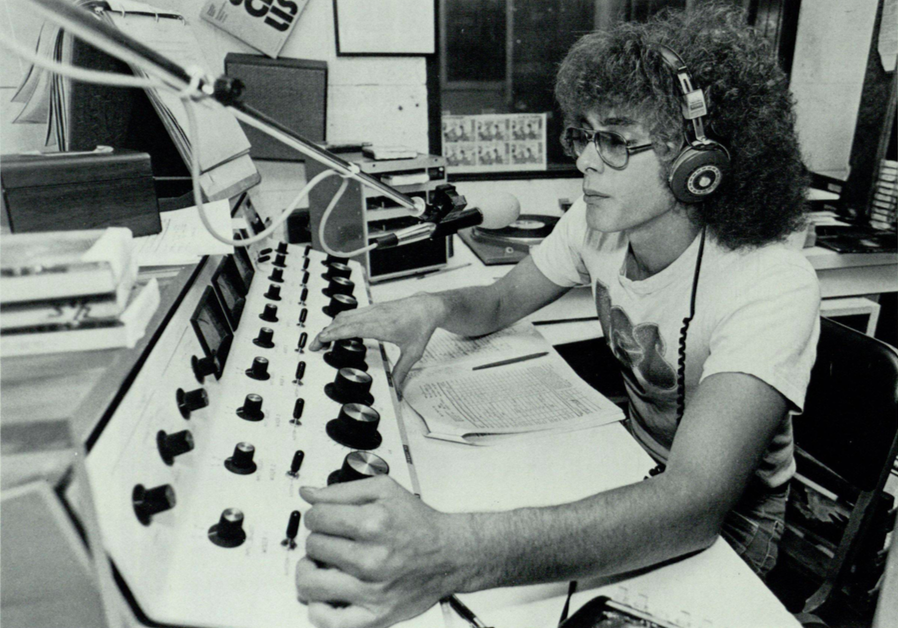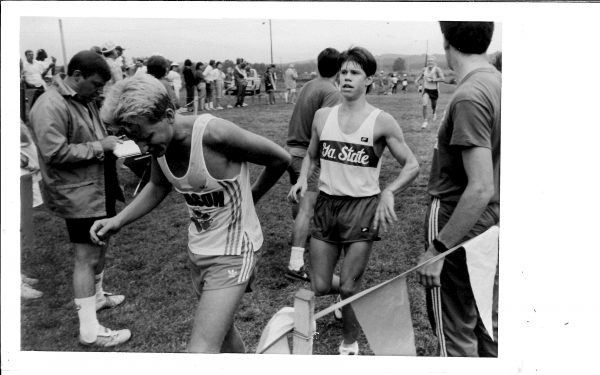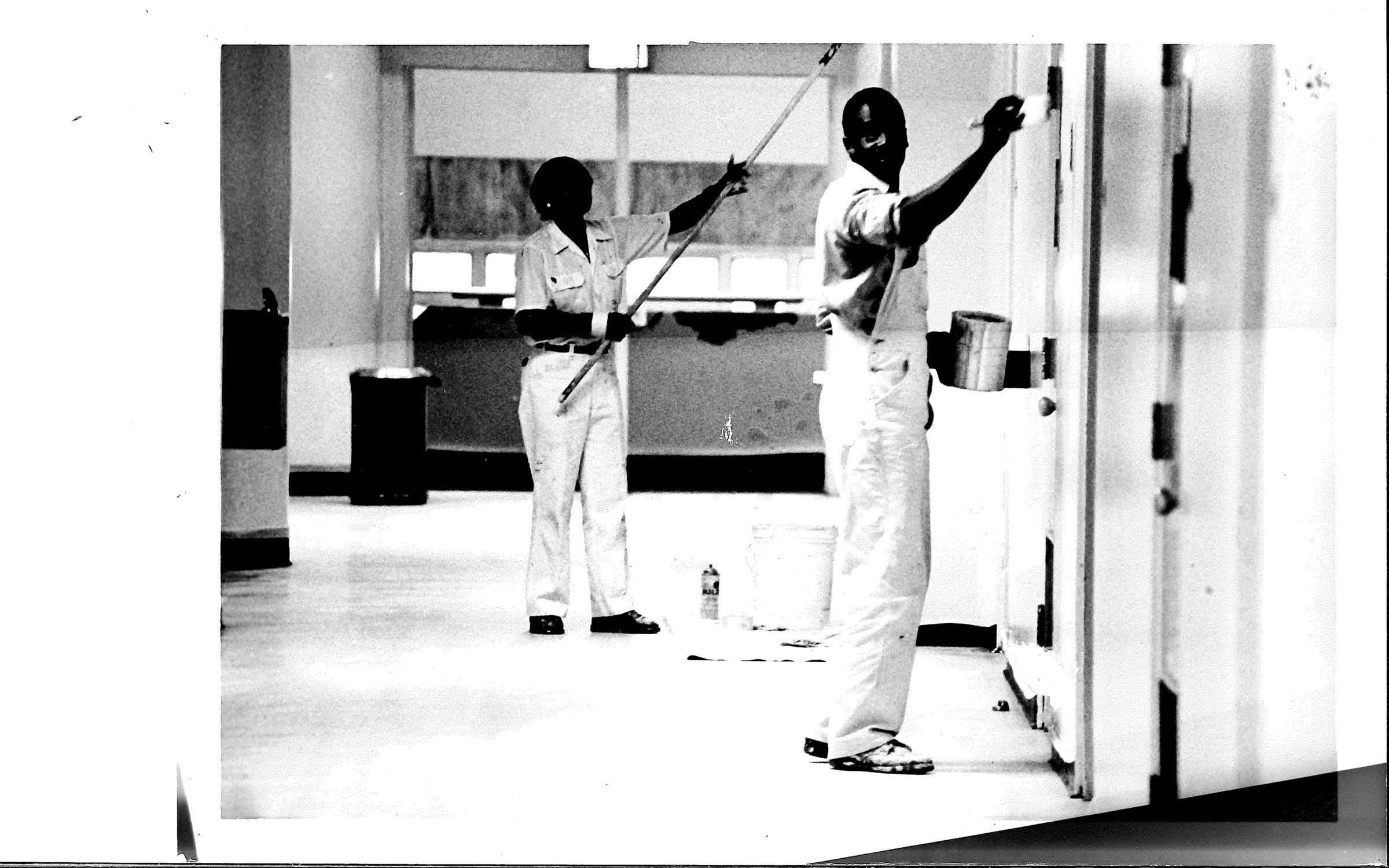Student-published photography, history and impact
The history of visual storytelling in student media
Written by Sam Puckett, Photo Illustration from Georgia State Rampway Archives • October 2, 2018
Today, The Signal is representing life as it currently is. To read a dusty, decades old yearbook is to read life as it was.
Mediamakers have an uncomfortable responsibility to the primacy of a primary source. In the digital age, the contemporary critique of “fake news” accuses the news media of imparting the platform of truth to biased experts, advertisements and indebted despots.
We are taught to read history as stale discussions of discussion, so much so that history is buried under the historians gossiping about it. But somewhere behind the “expert opinions” is a primary source. All writing is a letter addressed to history—it’s only a matter of how long it takes to arrive.
Student-published photography, history and impact
The history of visual storytelling in student media
Written by Sam Puckett, Photo Illustration from Georgia State Rampway Archives • October 2, 2018
Today, The Signal is representing life as it currently is. To read a dusty, decades old yearbook is to read life as it was.
Mediamakers have an uncomfortable responsibility to the primacy of a primary source. In the digital age, the contemporary critique of “fake news” accuses the news media of imparting the platform of truth to biased experts, advertisements and indebted despots.
We are taught to read history as stale discussions of discussion, so much so that history is buried under the historians gossiping about it. But somewhere behind the “expert opinions” is a primary source. All writing is a letter addressed to history—it’s only a matter of how long it takes to arrive.
STUDENT MEDIA THROUGH THE LENS
The first yearbook was published in 1934 as the Nocturne for the then-Evening School. After an eventual merge with the day school’s yearbook, the Gateway, it continued as the Rampway in 1947 until it ceased publication in 1996. The work of the Rampway was a celebration as much as a record of each year it was published.
To its contemporaries, the Rampway was a trophy to return to those at home, showing the year on campus each student shared. To the present, it is a historical document, a time and place told to us in its own words. The 1964 Rampway writers offer a photo essay and accompanying prose:
“Atlanta is a true national city. Not one city, but a community of towns, cities and counties. Yankee style skyscrapers rise along a romantic street of legends called Peachtree. Industrial districts intermingle with home sprinkled green hills.”

The writer continues, covering transportation, finance, sports and education capital that made Atlanta relevant and desirable nationally at the time. Funny that some things don’t change.
Paul Castell is a Georgia State alumnus who worked at The Signal for three years in the early ‘80s. As a show of how much times have changed, he said during his time, the newspaper’s office smelled so strongly of cigarette smoke, it earned the nickname “The Smoke Signal.” We at The Signal today speculate that it must have been from the stress. Now, Castell is the president of Dove Studio, a kitchen interior design firm. According to him, The Signal was his main social outlet during undergrad.
STUDENT MEDIA THROUGH THE LENS
The first yearbook was published in 1934 as the Nocturne for the then-Evening School. After an eventual merge with the day school’s yearbook, the Gateway, it continued as the Rampway in 1947 until it ceased publication in 1996. The work of the Rampway was a celebration as much as a record of each year it was published.
To its contemporaries, the Rampway was a trophy to return to those at home, showing the year on campus each student shared. To the present, it is a historical document, a time and place told to us in its own words. The 1964 Rampway writers offer a photo essay and accompanying prose:
“Atlanta is a true national city. Not one city, but a community of towns, cities and counties. Yankee style skyscrapers rise along a romantic street of legends called Peachtree. Industrial districts intermingle with home sprinkled green hills.”

The writer continues, covering transportation, finance, sports and education capital that made Atlanta relevant and desirable nationally at the time. Funny that some things don’t change.
Paul Castell is a Georgia State alumnus who worked at The Signal for three years in the early ‘80s. As a show of how much times have changed, he said during his time, the newspaper’s office smelled so strongly of cigarette smoke, it earned the nickname “The Smoke Signal.” We at The Signal today speculate that it must have been from the stress. Now, Castell is the president of Dove Studio, a kitchen interior design firm. According to him, The Signal was his main social outlet during undergrad.
“It was a great way to meet people,” Castell said. “You’d ask them about anything, their majors, how they liked Georgia State. They loved to be in the newspaper.”
Castell joined The Signal because photography made him feel special. At a time when students “just came in, went to class and left,” there was a secret pleasure in staying informed. On a campus that was constantly moving, Castell loved to capture small moments of action. Whether it was a crew of painters or a wistful stranger through Library Plaza, it excited him to share his vision, humble as it seemed.
“It was a way to practice my hobby,” Castell said. “You were one of hundreds with a camera. Not like now, where everyone has one.”
The Signal encouraged Castell to develop social and professional skills he would take with him. Sharing a goal with a team has a way of driving the best work out of some people. Castell saw his editors stressing to publish and it encouraged him to have his work in on time.
“It helped in time management, meeting deadlines,” Castell said.
But it wasn’t all hard work for Castell, as the job came with perks.
“I got out of class early to get some shots a couple of times,” Castell said.
“It was a great way to meet people,” Castell said. “You’d ask them about anything, their majors, how they liked Georgia State. They loved to be in the newspaper.”
Castell joined The Signal because photography made him feel special. At a time when students “just came in, went to class and left,” there was a secret pleasure in staying informed. On a campus that was constantly moving, Castell loved to capture small moments of action. Whether it was a crew of painters or a wistful stranger through Library Plaza, it excited him to share his vision, humble as it seemed.
“It was a way to practice my hobby,” Castell said. “You were one of hundreds with a camera. Not like now, where everyone has one.”
The Signal encouraged Castell to develop social and professional skills he would take with him. Sharing a goal with a team has a way of driving the best work out of some people. Castell saw his editors stressing to publish and it encouraged him to have his work in on time.
“It helped in time management, meeting deadlines,” Castell said.
But it wasn’t all hard work for Castell, as the job came with perks.
“I got out of class early to get some shots a couple of times,” Castell said.

CULTURE ON THE CONCRETE CAMPUS
Always building, always moving, Georgia State has a restless campus. In a way, that reflects the city it calls home. Much of Georgia State’s campus has changed over time, but some gems remain unweathered.
We can see, from the benefit of the 1995 Rampway, that students in the late ‘50s once gathered on the rooftop lounge of Sparks Hall to enjoy a bite to eat or cigarette to smoke. In the photo, students wear clothing popular in the 1950s. The women are in midi dresses and demure cardigans, hair in the curled bouffants and pageboy cuts of the post-war decade. The men wear their hair in closely cropped side parts and quiffs, in polo shirts or white T-shirts. The roof of Sparks Hall remains visible today from the studio windows in the Arts and Humanities building.


CULTURE ON THE CONCRETE CAMPUS
Always building, always moving, Georgia State has a restless campus. In a way, that reflects the city it calls home. Much of Georgia State’s campus has changed over time, but some gems remain unweathered.
We can see, from the benefit of the 1995 Rampway, that students in the late ‘50s once gathered on the rooftop lounge of Sparks Hall to enjoy a bite to eat or cigarette to smoke. In the photo, students wear clothing popular in the 1950s. The women are in midi dresses and demure cardigans, hair in the curled bouffants and pageboy cuts of the post-war decade. The men wear their hair in closely cropped side parts and quiffs, in polo shirts or white T-shirts. The roof of Sparks Hall remains visible today from the studio windows in the Arts and Humanities building.
In the left corner of a brick wall centerframe, a sign advertises the “Trust Company of Georgia.” The Trust was founded in 1891 by Joel Hurt, noted Atlanta developer. In 1985 the Trust Company of Georgia and Sun Banks merged to form SunTrust Banks.
A group of young women stand on a plantation-style twin staircase. Their gloved hands steady their perfect posture against a pearlescent bannister. From the 1964 Rampway, a section titled “Traditional Beauty” begins. The following pages feature selected images showcasing each girl individually, outfits and locations curated to create characters and interest for each posed woman.
An eerie silence from the authors accompany the posed stills—the only text is the name of each woman and beauty titles she has won. They pose, sometimes looking just off camera, sometimes responding to the viewer’s gaze with their own. Some wear modern ‘60s fashion, some make longing antebellum references. This is what it was like as a woman to compete for status in 1964.
“Why didn’t I go to a traditional campus?”
This question opens an article from the 1983 Rampway. The question is about the stress of commuting, sympathizing with the many students for whom it was a daily necessity. The unnamed author offers a silver lining: Commuting brings adult lessons of responsibility, along with a sense of adventure.
In the middle of a campus that won’t stop moving, student media was one of the best ways to become involved and informed. Castell remembers fondly the relationship between The Signal and other student media.
“We used to be right across the hall from [Album 88 (WRAS)],” Castell said. “Those guys were a little more cool than us.”
Some things, at least, have changed.
In the left corner of a brick wall centerframe, a sign advertises the “Trust Company of Georgia.” The Trust was founded in 1891 by Joel Hurt, noted Atlanta developer. In 1985 the Trust Company of Georgia and Sun Banks merged to form SunTrust Banks.
A group of young women stand on a plantation-style twin staircase. Their gloved hands steady their perfect posture against a pearlescent bannister. From the 1964 Rampway, a section titled “Traditional Beauty” begins. The following pages feature selected images showcasing each girl individually, outfits and locations curated to create characters and interest for each posed woman.
An eerie silence from the authors accompany the posed stills—the only text is the name of each woman and beauty titles she has won. They pose, sometimes looking just off camera, sometimes responding to the viewer’s gaze with their own. Some wear modern ‘60s fashion, some make longing antebellum references. This is what it was like as a woman to compete for status in 1964.
“Why didn’t I go to a traditional campus?”
This question opens an article from the 1983 Rampway. The question is about the stress of commuting, sympathizing with the many students for whom it was a daily necessity. The unnamed author offers a silver lining: Commuting brings adult lessons of responsibility, along with a sense of adventure.
In the middle of a campus that won’t stop moving, student media was one of the best ways to become involved and informed. Castell remembers fondly the relationship between The Signal and other student media.
“We used to be right across the hall from [Album 88 (WRAS)],” Castell said. “Those guys were a little more cool than us.”
Some things, at least, have changed.
